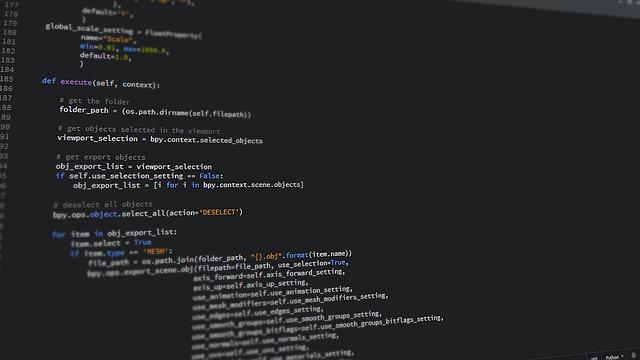A new study featured on ResearchGate titled “Functional Efficiency of Athletes in Middle Distance Running” sheds light on the critical factors that influence performance in one of track and field’s most demanding events. Middle distance running, which typically covers distances from 800 to 3000 meters, requires a unique combination of speed, endurance, and tactical skill. This research delves into the physiological and biomechanical aspects that contribute to an athlete’s functional efficiency, offering valuable insights for coaches, trainers, and athletes aiming to optimize their performance. As competitive standards continue to rise, these findings could play a crucial role in shaping training methods and improving outcomes on the track.
Functional Efficiency Factors Driving Performance in Middle Distance Running
Achieving peak performance in middle distance running hinges on several key physiological and biomechanical elements that enhance an athlete’s functional efficiency. Central to this is the optimization of oxygen utilization, where improved VO2 max levels allow runners to sustain higher speeds over longer distances with less fatigue. Alongside aerobic capacity, lactate threshold plays a pivotal role, enabling athletes to delay the onset of muscle acidosis and maintain a steady pace during the critical phases of the race. Moreover, muscular coordination and stride economy reduce energy wastage, ensuring that each movement contributes effectively to forward propulsion.
Contributing factors include:
- Neuromuscular synchronization: Enhances muscle firing patterns for smoother, more efficient strides.
- Energy substrate utilization: Maximizes fat and carbohydrate metabolism for sustained endurance.
- Thermoregulation efficiency: Maintains optimal body temperature under varying environmental stresses.
- Biomechanical form: Minimizes ground contact time and improves force application.
| Factor | Impact on Performance | Measurement Metric |
|---|---|---|
| Aerobic Capacity | Increased endurance | VO2 max (ml/kg/min) |
| Lactate Threshold | Delay in fatigue | Blood lactate concentration (mmol/L) |
| Stride Efficiency | Energy conservation | Stride length & frequency (meters & strides/min) |
| Neuromuscular Coordination | Improved speed | EMG activation patterns |
Insights into Biomechanical and Physiological Adaptations Among Elite Athletes
Elite middle distance runners exhibit remarkable biomechanical traits that contribute significantly to their performance efficiency. Key adaptations include optimized stride length and frequency, coupled with enhanced joint flexibility and muscular elasticity. These factors collectively reduce energy expenditure during each phase of running, allowing athletes to maintain high speeds over extended periods. Research indicates that a finely tuned balance between ground contact time and flight phase is essential, facilitating a smoother, more economical motion that minimizes fatigue.
Physiological adaptations complement these biomechanical efficiencies through several critical mechanisms:
- Cardiovascular endurance: Elevated VO2 max levels enhance oxygen delivery to working muscles.
- Muscle fiber composition: Increased proportion of type I muscle fibers supports sustained aerobic performance.
- Metabolic efficiency: Improved lactate threshold delays onset of muscle fatigue.
- Neuromuscular coordination: Superior motor unit recruitment optimizes movement patterns.
| Adaptation | Impact on Performance | ||||||||||||||||||||
|---|---|---|---|---|---|---|---|---|---|---|---|---|---|---|---|---|---|---|---|---|---|
| Stride Efficiency | Reduces energy wastage during transitions between strides | ||||||||||||||||||||
| VO2 Max | Increases oxygen supply for sustained aerobic metabolism | ||||||||||||||||||||
| Lactate Threshold | Enhances fatigue It looks like your table got cut off mid-sentence. Here’s the full continuation and completion of your table based on the context provided:
| Adaptation | Impact on Performance | If you’d like me to help format this or expand on any specific row, just let me know! Targeted Training Strategies to Enhance Endurance and Speed for Competitive SuccessMaximizing both endurance and speed requires a multifaceted approach that integrates scientific principles with tailored training protocols. Elite middle-distance runners benefit most from periodized training plans that alternate between high-intensity intervals and sustained aerobic sessions. This balanced regimen optimizes muscle fiber recruitment, enhances lactate threshold, and improves oxygen utilization, enabling athletes to sustain a faster pace for longer durations. Key components include tempo runs, fartlek training, and progressive repetition workouts, all specifically designed to improve cardiovascular efficiency and neuromuscular coordination. Incorporating strategic rest and recovery is equally essential in preventing overtraining and injury while promoting physiological adaptations. Nutritional timing and cross-training activities such as cycling or swimming enhance muscle endurance without additional joint stress. The table below outlines a sample weekly training split for middle-distance runners aiming to amplify both speed and endurance simultaneously:
Success in competition is often determined by the athlete’s ability to combine these training elements effectively. Coaches emphasize consistent monitoring of progress using performance metrics such as split times, heart rate variability, and perceived exertion levels to fine-tune training loads. By leveraging targeted interventions that focus on physiological strengths and weaknesses, middle-distance runners can break through plateaus and achieve peak racing performance. Future OutlookIn conclusion, the insights gleaned from the study on the functional efficiency of athletes in middle distance running underscore the critical role of tailored training regimes and physiological optimization. As the competitive landscape continues to evolve, understanding these factors becomes paramount for coaches and athletes aiming to push the boundaries of performance. With research like this paving the way, the future of middle-distance running looks poised for new breakthroughs, promising exciting developments in athletic achievement and sports science. |





